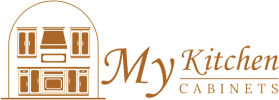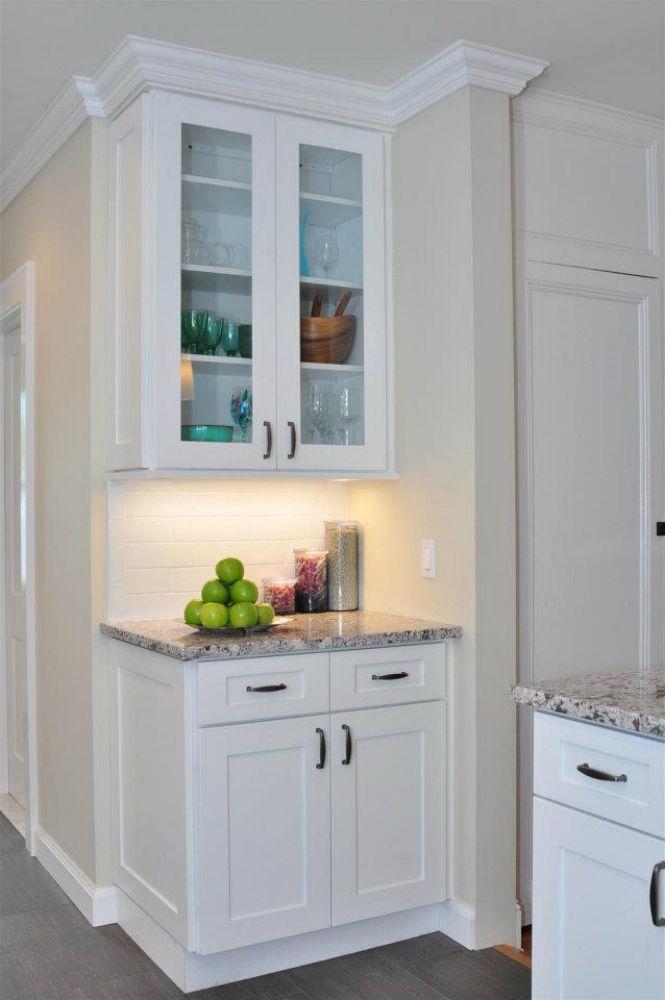Choosing the ideal material for your kitchen cabinets is a critical decision that affects not only the look and feel of your space but also its longevity, maintenance requirements, and overall value. With so many options available—from traditional hardwoods to engineered products—understanding the strengths and drawbacks of each will empower you to make an informed choice. Whether you’re remodeling your entire kitchen or simply replacing worn-out doors, this guide will walk you through the key factors to consider, so you can invest in cabinets that stand up to daily use and reflect your personal style.
Understanding Cabinet Material Options
When shopping for kitchen cabinets you’ll encounter a variety of core materials. Each brings its own set of properties:
-
Solid Wood
Natural and timeless, solid wood offers a rich appearance and can be refinished multiple times. Hardwoods like maple, oak, and cherry resist dents and scratches better than softwoods. However, they can be prone to warping in high-humidity environments unless properly sealed. -
Plywood
Constructed from layers of wood veneer glued together, plywood provides excellent dimensional stability and strength. It resists cracking and shrinking, making it a durable choice for cabinet boxes and shelving. -
Medium-Density Fiberboard (MDF)
Made from wood fibers bonded under heat and pressure, MDF delivers a smooth, flat surface ideal for painted finishes. It’s more uniform than plywood but less moisture-resistant, so it’s best used in low-humidity areas or with proper sealing. -
Particleboard
A budget-friendly option composed of wood chips and resin, particleboard is often covered with laminate or wood veneer. While cost-effective, it is less durable and more susceptible to moisture damage compared to plywood and MDF.
By weighing aesthetic preferences against performance characteristics, you can narrow down the best base material for your lifestyle and environment.
Comparing Solid Wood, Plywood, and MDF
To make a truly educated decision, it helps to compare the most popular materials side by side:
| Feature | Solid Wood | Plywood | MDF |
|---|---|---|---|
| Strength | High | Very High | Moderate |
| Resistance to Moisture | Moderate (with seal) | High | Low |
| Paint Finish Quality | Variable (grain may show) | Moderate | Excellent |
| Cost | High | Moderate | Low to Moderate |
| Weight | Heavy | Moderate | Heavy |
-
Solid Wood shines in classic or rustic kitchens where natural grain is desired.
-
Plywood excels in structural applications such as cabinet boxes, where stability is key.
-
MDF is ideal for sleek, painted cabinet doors and decorative millwork.
Understanding these trade‑offs will help you match material choice to your priorities—whether that’s cost control, visual appeal, or long‑term performance.
Pet-Friendly Materials for Busy Households
If you have furry friends roaming your home, consider pet friendly cabinet materials and finishes that can withstand scratches, spills, and occasional accidents:
-
High-Pressure Laminate over Plywood
This combination resists stains and scratches better than raw wood surfaces. The smooth, hard surface wipes clean easily and holds up against claws. -
Thermofoil on MDF
Thermofoil (a heat‑bonded vinyl film) creates a continuous, sealed surface that repels moisture and stains. While it can peel over time in high‑heat areas, it offers an affordable way to keep kitchen cabinets looking fresh. -
Durable Topcoats
Whether you choose wood or engineered materials, selecting a premium polyurethane or conversion varnish adds a protective barrier that stands up to scrapes and splashes. -
Rounded Edges and Flush Hardware
Minimizing protruding corners and installing flush or recessed handles reduces the chance of pets bumping into or scratching cabinet fronts.
By prioritizing materials and finishes built for resilience, you ensure your kitchen cabinets remain attractive and functional in a pet-loving environment.
Maintenance and Durability Considerations
Durability isn’t just about the initial material—it’s also shaped by how you care for your cabinets over time:
-
Regular Cleaning
Wipe surfaces with a gentle, non‑abrasive cleaner and a soft cloth. Avoid harsh chemicals that can degrade finishes or raise wood grain. -
Immediate Spill Management
Whether it’s cooking grease or a water spill, prompt cleanup prevents stains and moisture infiltration that could lead to warping or delamination. -
Hardware Inspection
Tighten loose hinges and handles periodically. Well-maintained hardware reduces stress on cabinet materials and prevents premature wear. -
Re-Sealing Wood
Solid wood cabinets benefit from occasional reapplication of a food-safe sealant or oil, especially in high‑humidity climates. -
Avoid Excessive Weight
Store heavy items on lower shelves to reduce strain on cabinet boxes and shelving materials.
A proactive maintenance routine extends the life of your cabinets and protects your investment in quality cabinetry.
Budget and Value Analysis
While it’s tempting to choose the lowest‑cost option, consider long‑term value:
-
Initial Investment vs. Lifespan
Solid wood cabinets may cost more upfront but can last decades if properly maintained. Lower‑cost materials may need replacement sooner, driving up lifetime costs. -
Cost of Finishes and Installation
Custom paint or stain, hardware upgrades, and professional installation all add to the final price. Factor these into your budget comparisons. -
Resale Impact
Well‑crafted cabinets made from durable materials can elevate your home’s resale value. Buyers often appreciate kitchens that look and function like new. -
Warranty and Support
Some manufacturers offer extended warranties on plywood construction or metal‑reinforced hinges. These guarantees can provide peace of mind and save on repair costs.
Balancing upfront costs with expected longevity and potential resale benefits ensures you choose materials that align with both your budget and quality expectations.
Why Choose Us?
At My Kitchen Cabinets, we combine decades of craftsmanship with a commitment to quality materials and personalized service:
-
Expert Guidance
Our design consultants help you navigate material choices, finishes, and hardware options to create a kitchen that reflects your style and stands up to daily life. -
Quality Assurance
We source only premium hardwoods and engineered materials from trusted suppliers, ensuring every cabinet meets stringent durability standards. -
Pet-Friendly Solutions
Understanding that many homes are pet-friendly, we offer specialized finishes and construction techniques that resist wear from paws and claws. -
Transparent Pricing
We provide detailed estimates that cover all aspects of your project—no hidden fees or surprise charges. -
Satisfaction Guarantee
From measurement to installation, our team takes personal pride in delivering flawless results and supporting you long after your cabinets are in place.
With My Kitchen Cabinets, you’re choosing a partner dedicated to creating beautiful, long-lasting kitchens tailored to your needs.
Conclusion
Selecting the right material for durable kitchen cabinets involves balancing aesthetics, performance, maintenance, and budget. Solid wood, plywood, and MDF each have their place, depending on your priorities for natural beauty, structural integrity, or smooth painted finishes. For pet-friendly homes, laminates and sealed surfaces offer extra resilience. A thoughtful approach to maintenance—along with professional guidance—ensures your cabinetry investment remains functional and attractive for years to come. By considering long‑term value and prioritizing quality, you can create a kitchen that not only meets your lifestyle needs but enhances your daily living experience.
Frequently Asked Questions
Q: How to pick the right material for durable kitchen cabinets?
A: Start by evaluating your daily routine and environmental factors—do you need moisture resistance, scratch protection for pets, or the ability to refinish over time? Compare solid wood, plywood, and MDF in terms of strength, cost, and maintenance, then choose the material that best aligns with your priorities.
Q: Which material is most resistant to moisture?
A: Plywood topped with a high-quality finish offers superior resistance to warping and swelling. Properly sealed solid wood can also perform well, but MDF and particleboard are less moisture-tolerant without additional protection.
Q: Can I repaint or refinish my cabinets if I choose a cheaper material like MDF?
A: Yes. MDF provides an exceptionally smooth surface for paint. However, ensure edges are sealed and use a durable primer and topcoat to prevent chipping or moisture damage.
Q: Are pet-friendly finishes more expensive?
A: Premium protective finishes may add to the initial cost, but they reduce maintenance and replacement expenses over time—making them a cost-effective choice for pet-friendly households.
Q: How often should I maintain my cabinets to ensure durability?
A: Light cleaning should occur weekly, with hardware checks every few months. Solid wood may require resealing annually in high-humidity environments, while laminate and thermofoil surfaces need minimal upkeep.

